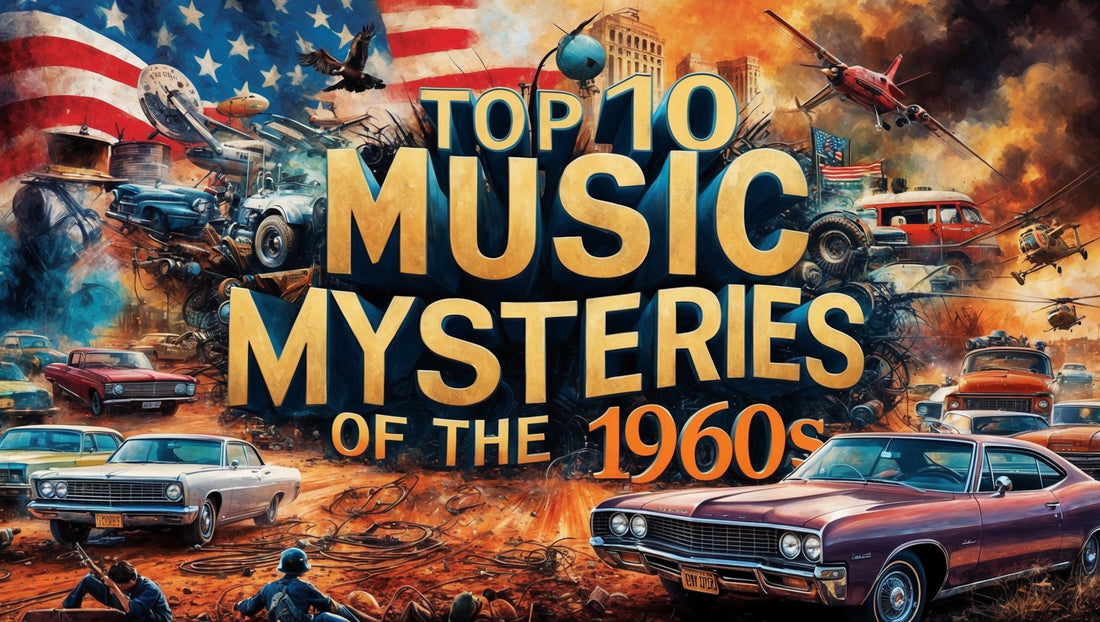The 1960s was a transformative decade in music, filled with groundbreaking artists and iconic moments. Yet, it also harbors some of the most intriguing mysteries that continue to spark curiosity and debate. Here are the top 10 music mysteries of the 1960s:
-
The Death of Brian Jones Brian Jones, founding member of The Rolling Stones, was found dead in his swimming pool on July 3, 1969. While officially ruled as "death by misadventure," questions linger about the circumstances surrounding his death. Some believe Jones was murdered, pointing to inconsistencies in witness statements and the potential involvement of his builder, Frank Thorogood, who allegedly confessed on his deathbed.
-
Paul is Dead The "Paul is dead" conspiracy theory emerged in 1969, suggesting that Paul McCartney had died in 1966 and was replaced by a lookalike. This theory gained traction when fans began finding "clues" in Beatles album covers and lyrics, such as the Abbey Road cover depicting a funeral procession. Despite McCartney's continued public presence, the theory persists as one of the most famous and bizarre in music history.
-
The Beach Boys' "Smile" Album Brian Wilson's "Smile" was intended to be The Beach Boys' follow-up to "Pet Sounds." However, the project was shelved in 1967 amid creative disputes, mental health struggles, and drug use. Wilson referred to "Smile" as a "teenage symphony to God," and its incomplete status only fueled its legend. Decades later, Wilson released a solo version, and a reconstructed version by The Beach Boys followed, but the original project's mystique remains.
-
Bob Dylan's Motorcycle Accident On July 29, 1966, Bob Dylan reportedly had a motorcycle accident near his home in Woodstock, New York. Details about the accident are sparse, leading to speculation about its severity and impact on his career. Some suggest Dylan used the accident as an excuse to withdraw from the pressures of fame and re-evaluate his life and work. The true extent of his injuries and the accident's role in his subsequent reclusion remain subjects of debate.
-
The Zodiac Killer and The Beatles The Zodiac Killer, active in the late 1960s, sent cryptic messages to the press that some theorists believe were influenced by The Beatles' music. One letter included the phrase "All those I have killed," which some link to the song "Helter Skelter." While these connections are speculative, they add an eerie layer to the unsolved case of the Zodiac Killer and his potential cultural influences.
-
Jim Morrison's Death The Doors' frontman Jim Morrison died in Paris on July 3, 1971. His death was officially attributed to heart failure, but no autopsy was performed, leading to widespread speculation. Rumors suggest Morrison might have died from a drug overdose or even faked his death to escape the pressures of fame. The lack of clear details and the absence of an autopsy report continue to fuel these theories.
-
Who Wrote "A Whiter Shade of Pale"? Procol Harum's 1967 hit "A Whiter Shade of Pale" became the subject of a legal battle over songwriting credits. Keyboardist Matthew Fisher successfully claimed co-authorship in 2006, decades after the song's release. The case highlighted the complexities of creative collaboration and the lingering questions about the true origins of one of the 1960s' most iconic songs.
-
The Monterey Pop Festival Film The 1967 Monterey Pop Festival was a seminal event in rock history, but the documentary film about it faced multiple edits and rumors of missing footage. Questions about which performances were left out and why continue to intrigue fans. The film's portrayal of the festival and its cultural impact remains a topic of fascination and speculation.
-
The Rolling Stones' Altamont Free Concert The Altamont Free Concert on December 6, 1969, headlined by The Rolling Stones, turned tragic when violence broke out, resulting in multiple deaths. The Hells Angels, hired as security, were involved in several violent incidents, including the fatal stabbing of a concertgoer. The chaotic events and decisions that led to the disaster are still scrutinized, marking Altamont as a dark counterpart to Woodstock.
-
The Lost Jimi Hendrix Album Jimi Hendrix was working on new material before his death in 1970, with rumors of a "lost album" persisting for decades. Various unreleased tracks and demos suggest what could have been another groundbreaking record from the guitar legend. The search for these recordings and the speculation about their content add to the enduring mystique of Hendrix's legacy.
These captivating tales from the 1960s not only deepen our fascination with the era but also highlight the enigmatic aspects of some of its most iconic figures and events.
















